Established in 1989 for advanced individual technological contributions in the fields of electrochemistry and solid state science and technology. These members are being recognized at the plenary session for scientific achievements, for leadership, and for active participation in the affairs of ECS. Each year, up to 15 renowned scientists and engineers are chosen by their peers for this honor. Join us in celebrating the 2017 class of the Fellows of the Electrochemical Society.
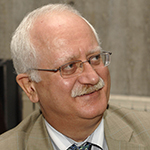 Christian Amatore is a member of the French Académie des Sciences, the Chinese Academy of Sciences, Academia Europae, and of the Third World Academy of Sciences. He is a fellow of the Royal Society of Chemistry, Chinese Chemical Society, International Society of Electrochemistry, and the Israeli Chemical Society. He has published more than 480 primary research publications culminating in more than 21,200 citations with an h-index of 73 and an average yearly citation rate of ca. 1,200 over the past five years.
Christian Amatore is a member of the French Académie des Sciences, the Chinese Academy of Sciences, Academia Europae, and of the Third World Academy of Sciences. He is a fellow of the Royal Society of Chemistry, Chinese Chemical Society, International Society of Electrochemistry, and the Israeli Chemical Society. He has published more than 480 primary research publications culminating in more than 21,200 citations with an h-index of 73 and an average yearly citation rate of ca. 1,200 over the past five years.
His research interests are extremely wide, from chemistry and catalysis to biology, all rooted in electrochemistry and based quantitative measurements supported by original theoretical models. With Mark Wightman, Amatore was one of the main pioneers of micro- and ultra-microelectrodes in electrochemistry. His research impact is best illustrated by the rationalization of electron transfer catalysis, the mechanisms of electron transfer activation of molecules; and more recently by a thorough elucidation of the most important mechanistic aspects of homogeneous catalysis by palladium complexes, and by investigations of single living cells with ultramicro- and nano-electrodes aimed to increase our current understanding of vesicular exocytosis by endocrine cells and neurons or oxidative stress.
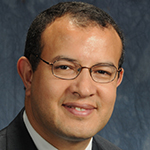 Khalil Amine is an Argonne Distinguished Fellow and the manager of the Advanced Battery Technology team at Argonne National Laboratory, where he is responsible for directing the research and development of advanced materials and battery systems for HEV, PHEV, EV, satellite, military, and medical applications. He is also deputy director of US-China Clean Energy Research Center and serves as a committee member of the U.S. National Research Consul and U.S. Academy of Sciences.
Khalil Amine is an Argonne Distinguished Fellow and the manager of the Advanced Battery Technology team at Argonne National Laboratory, where he is responsible for directing the research and development of advanced materials and battery systems for HEV, PHEV, EV, satellite, military, and medical applications. He is also deputy director of US-China Clean Energy Research Center and serves as a committee member of the U.S. National Research Consul and U.S. Academy of Sciences.
Amine is an adjunct professor at Stanford University, Hong Kong University of Science & Technology, and Peking University. Among his many awards, Amine is a recipient of Scientific American’s Top Worldwide 50 Researcher Award (2003), University of Chicago Distinguished Performance Award (2008), U.S. Federal Laboratory Award for Excellence in Technology Transfer (2009), DOE Vehicle Technologies Office Award (2013), and is the five-time recipient of the R&D 100 Award. Amine holds over 176 patents and patent applications and was the most cited scientist in the world in the field of battery technology. He serves as the president of the International Meeting on Lithium Batteries.
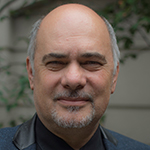 Plamen Atanassov received his MS from the University of Sofia in chemical physics and PhD from the Bulgarian Academy of Sciences in physical chemistry. His career started as a member of the technical staff at the central laboratory of Electrochemical Power Sources in metal-air batteries, and a visiting scientist at the Frumkin’s Institute of Electrochemistry, specializing in bio-electrochemistry. Atanassov moved to the U.S. in 1992 and joined the research faculty at the University of New Mexico (UNM). During the 1990s he was involved in the development of electrochemical biosensors for biomedical, environmental, food, and defense applications.
Plamen Atanassov received his MS from the University of Sofia in chemical physics and PhD from the Bulgarian Academy of Sciences in physical chemistry. His career started as a member of the technical staff at the central laboratory of Electrochemical Power Sources in metal-air batteries, and a visiting scientist at the Frumkin’s Institute of Electrochemistry, specializing in bio-electrochemistry. Atanassov moved to the U.S. in 1992 and joined the research faculty at the University of New Mexico (UNM). During the 1990s he was involved in the development of electrochemical biosensors for biomedical, environmental, food, and defense applications.
In 1999, Atanassov joined Superior MicroPowders, where he was a project leader in fuel cell electrocatalysts development, and introduced spray pyrolysis for catalyst synthesis on an industrial scale. He returned to UNM in 2000 as tenure-track faculty member. In 2007, he founded the UNM Center for Emerging Energy Technologies. Currently, he is Distinguished Professor of Chemical & Biological Engineering and Chemistry & Biology. Since 2015, he has been the director of the UNM Center for Micro-Engineered Materials.
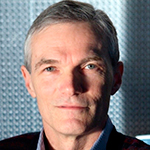 Scott A. Barnett is a professor in the Materials Science and Engineering Department at Northwestern University. After receiving his PhD in metallurgy from the University of Illinois at Urbana-Champaign in 1982, he held postdoctoral appointments at the University of Illinois and Linkøping University (Sweden). He took his present position at Northwestern University in 1986.
Scott A. Barnett is a professor in the Materials Science and Engineering Department at Northwestern University. After receiving his PhD in metallurgy from the University of Illinois at Urbana-Champaign in 1982, he held postdoctoral appointments at the University of Illinois and Linkøping University (Sweden). He took his present position at Northwestern University in 1986.
He has worked on ion-assisted deposition of semiconductor and ceramic thin films and coatings and developed ultra-hard nitride nano-layered coatings. Barnett’s research utilizes physical vapor and colloidal deposition methods for producing ceramic materials with energy applications, including lithium-ion battery electrodes, solid oxide fuel cells (SOFCs), and reversible solid oxide cells (ReSOCs). He was among the first to propose and then demonstrate SOFCs with thin supported electrolytes. Barnett is currently developing pressurized intermediate-temperature ReSOCs for achieving electricity storage with high round-trip efficiency, and is using accelerated testing to characterize SOFC degradation processes. He has published more than 250 refereed papers and has an h-index of 72 (Google Scholar).
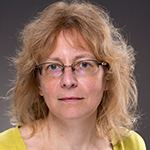 Christina Bock is a senior research scientist at the National Research Council (NRC) in Ottawa, Canada, where she led the research group on electrocatalysis and electrochemical processes. More recently, her role has shifted to leading the R&D efforts in manufacturing, materials improvement, and accelerated testing for NRC’s Energy Storage Program for the renewal of the electrical grid. She joined NRC after graduating from the University of Calgary in May 1997. Her research originally focused on electrocatalysis for waste water treatment, fuel cells, electrochemical water splitting reactions, and as of recently, focuses on cathode materials for batteries.
Christina Bock is a senior research scientist at the National Research Council (NRC) in Ottawa, Canada, where she led the research group on electrocatalysis and electrochemical processes. More recently, her role has shifted to leading the R&D efforts in manufacturing, materials improvement, and accelerated testing for NRC’s Energy Storage Program for the renewal of the electrical grid. She joined NRC after graduating from the University of Calgary in May 1997. Her research originally focused on electrocatalysis for waste water treatment, fuel cells, electrochemical water splitting reactions, and as of recently, focuses on cathode materials for batteries.
Bock has authored numerous original research articles in well regarded journals, five book chapters, and has numerous technical reports sponsored by industrial partners. She joined ECS in 1993 during her graduate studies in Canada. Since becoming a member, she has been actively involved with ECS at many levels, including serving as treasurer and currently as vice president. In 2010, she and her colleague Johna Leddy initiated the first ECS International Electrochemical Energy Summit, which is now an annual symposium.
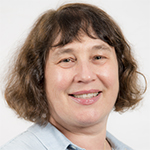 Marca M. Doeff is a staff scientist in the Energy Storage and Distributed Resources Division at Lawrence Berkeley National Laboratory (LBNL) and principle investigator working in battery programs funded by the U.S. Department of Energy. Her primary research interests concern materials for energy storage applications, particularly Li-ion batteries, Na-ion batteries, and electrolytes for solid state devices. She has co-authored more than 200 papers, patents, abstracts, and book chapters on these topics, including many in ECS journals.
Marca M. Doeff is a staff scientist in the Energy Storage and Distributed Resources Division at Lawrence Berkeley National Laboratory (LBNL) and principle investigator working in battery programs funded by the U.S. Department of Energy. Her primary research interests concern materials for energy storage applications, particularly Li-ion batteries, Na-ion batteries, and electrolytes for solid state devices. She has co-authored more than 200 papers, patents, abstracts, and book chapters on these topics, including many in ECS journals.
She received her BA in chemistry from Swarthmore College in 1978 and her PhD in inorganic chemistry at Brown University in 1983. After a postdoctoral appointment at UC Santa Barbara, working for Ralph Pearson, she started a position at the Naval Ocean Systems Center in San Diego, CA researching anti-fouling coatings, and then joined LBNL in 1990. She currently serves as vice chair of the ECS Battery Division and has co-organized many symposia for the Society.
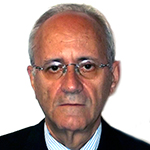 Mario Ferreira has been active in the field of corrosion for 40 years, making contributions in a number of areas. He is a full professor and head of the Department of Materials and Ceramic Engineering at University of Aveiro. Ferreira’s work appears in top journals, earning him an h-index of 62, which is an extremely high number for the corrosion area and reflects the impact of his work. In his career, he has trained a considerable number of MS and PhD students and postdocs, many of whom are now making major contributions on their own.
Mario Ferreira has been active in the field of corrosion for 40 years, making contributions in a number of areas. He is a full professor and head of the Department of Materials and Ceramic Engineering at University of Aveiro. Ferreira’s work appears in top journals, earning him an h-index of 62, which is an extremely high number for the corrosion area and reflects the impact of his work. In his career, he has trained a considerable number of MS and PhD students and postdocs, many of whom are now making major contributions on their own.
He has been extremely active in scientific societies, representing Portugal in the International Corrosion Council, participating in different working parties of the European Federation of Corrosion, and as a two-year member of its board of administrators. He is also member of the Steel Advisory Group of the Research Steel and Coal Fund of the European Union.
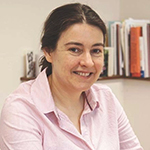 Clare P. Grey is the Geoffrey Moorhouse-Gibson Professor of Chemistry at Cambridge University and a Fellow of Pembroke College Cambridge. She received a BA and PhD (1991) in Chemistry from the University of Oxford. After post-doctoral fellowships in the Netherlands and at DuPont CR&D in Wilmington, DE, she joined the faculty at Stony Brook University (SBU) as an Assistant (1994), Associate (1997) and then Full Professor (2001-2015). She moved to Cambridge in 2009, maintaining an adjunct position at SBU. She was the director (2009-2010) and associate director (2011-2014) of the Northeastern Chemical Energy Storage Center, a DOE Energy Frontier Research Center.
Clare P. Grey is the Geoffrey Moorhouse-Gibson Professor of Chemistry at Cambridge University and a Fellow of Pembroke College Cambridge. She received a BA and PhD (1991) in Chemistry from the University of Oxford. After post-doctoral fellowships in the Netherlands and at DuPont CR&D in Wilmington, DE, she joined the faculty at Stony Brook University (SBU) as an Assistant (1994), Associate (1997) and then Full Professor (2001-2015). She moved to Cambridge in 2009, maintaining an adjunct position at SBU. She was the director (2009-2010) and associate director (2011-2014) of the Northeastern Chemical Energy Storage Center, a DOE Energy Frontier Research Center.
Recent honors and awards include the 2011 Royal Society Kavli Lecture and Medal for work relating to the environment and energy, honorary degrees from the Universities of Orleans (2012) and Lancaster (2013), the Gunther Laukien Award from the Experimental NMR Conference (2013), the Research Award from the International Battery Association (2013), the Royal Society Davy Award (2014), and the Arfvedson-Schlenk-Preis from the German Chemical Society (2015). Her current research interests include the use of solid state NMR and diffraction-based methods to determine structure-function relationships in materials for energy storage (batteries and supercapacitors), conversion (fuel cells), and carbon capture.
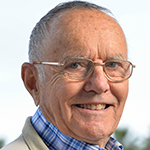 Robert Huggins obtained a BA in physics from Amherst College, and an MS and ScD in metallurgy from MIT. He has been on the Stanford University faculty since 1954, becoming full professor in 1962. He initiated the Department of Materials Science in 1959 and founded Stanford’s Center for Materials Research in 1961, where he served as director until 1977. He held an NSF Senior Postdoctoral Fellowship in 1965-66 with Carl Wagner in Göttingen, Germany.
Robert Huggins obtained a BA in physics from Amherst College, and an MS and ScD in metallurgy from MIT. He has been on the Stanford University faculty since 1954, becoming full professor in 1962. He initiated the Department of Materials Science in 1959 and founded Stanford’s Center for Materials Research in 1961, where he served as director until 1977. He held an NSF Senior Postdoctoral Fellowship in 1965-66 with Carl Wagner in Göttingen, Germany.
Huggins is the author or co-author of over 400 publications and 13 patents. He was editor of the 23 volume book series Annual Review of Materials Science, two books on solid state ionics topics, and two journals, Solid State Ionics, and Materials Research Bulletin. Huggins was one of the founders of the Materials Research Society. From 1991 to 1995 he was chief scientist of the Center for Solar Energy and Hydrogen Research in Ulm, Germany. He was named Honorary Professor at both the University of Ulm (1994) and the University of Kiel (2000) in Germany. He returned to Stanford in 2005.
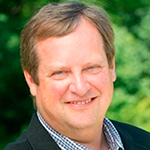 Chris Johnson is currently a senior chemist and group leader at Argonne National Laboratory, specializing in the research and development of battery materials and battery systems with 25 years of experience. He is known worldwide for his development of state-of-art lithium-ion battery cathode materials.
Chris Johnson is currently a senior chemist and group leader at Argonne National Laboratory, specializing in the research and development of battery materials and battery systems with 25 years of experience. He is known worldwide for his development of state-of-art lithium-ion battery cathode materials.
He holds a BS in chemistry from the University of North Carolina at Chapel Hill and a PhD in chemistry from Northwestern University. He has published over 110 papers and has 24 U.S. patents in the battery field. He has received the research award from the International Battery Association in 2006, and an R&D 100 award for the commercialization of lithium battery materials in 2009. Presently, he is chair of the ECS Battery Division and has been a member of the Society since 1993.
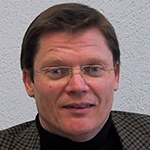 Joachim Maier is director at the Max Planck Institute (MPI) for Solid State Research and heads the Department of Physical Chemistry of Solids. Maier studied chemistry in Saarbrücken and earned his MA and PhD in physical chemistry there. He received his professorial degree at the University of Tübingen. From 1982 to 1988, he was a postdoc and staff member at the MPI for Solid State Research. From 1988 to 1991, he led the activities on functional ceramics at the MPI for Metals Research in Stuttgart. From 1988 to 1996, he taught solid state electrochemistry at the MIT as an external faculty member. In 1991 he was appointed director at MPI for Solid State Research and Honorary Professor at the University of Stuttgart.
Joachim Maier is director at the Max Planck Institute (MPI) for Solid State Research and heads the Department of Physical Chemistry of Solids. Maier studied chemistry in Saarbrücken and earned his MA and PhD in physical chemistry there. He received his professorial degree at the University of Tübingen. From 1982 to 1988, he was a postdoc and staff member at the MPI for Solid State Research. From 1988 to 1991, he led the activities on functional ceramics at the MPI for Metals Research in Stuttgart. From 1988 to 1996, he taught solid state electrochemistry at the MIT as an external faculty member. In 1991 he was appointed director at MPI for Solid State Research and Honorary Professor at the University of Stuttgart.
He is the recipient of various prizes of national and international societies (including the ECS Norman Hackerman Young Author Award in 1987) and a member of various national and international academies. Maier is editor of Solid State Ionics and past president of the International Society for Solid State Ionics. He has published more than 750 papers in refereed journals in the field of solid state electrochemistry and has been included in the list of the World’s Most Influential Scientific Minds (Thomson Reuters).
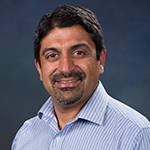 Rangachary Mukundan is a technical staff member at Los Alamos National Laboratory’s Materials Synthesis and Integrated Devices group. He received his PhD in materials science and engineering from the University of Pennsylvania in 1997.
Rangachary Mukundan is a technical staff member at Los Alamos National Laboratory’s Materials Synthesis and Integrated Devices group. He received his PhD in materials science and engineering from the University of Pennsylvania in 1997.
His current research interests include fuel cells, electrochemical gas sensors, and energy storage devices. Mukundan is the co-inventor on six U.S. patents and has authored over 100 peer-reviewed journal and transaction papers, cited over 5,000 times. His work has also been recognized through numerous awards, including an R&D 100 award in 1999, Scientific American’s Top 50 Science and Technology Achievements in 2003, the ECS High Temperature Materials Division J.B. Wagner Award in 2005, and the ECS Sensor Division Outstanding Achievement Award in 2016. He served on the ECS Board of Directors from 2006-2008 as the ECS Sensor Division chair and is currently serving as technical editor in the area of sensors and measurement sciences for the Journal of The Electrochemical Society.
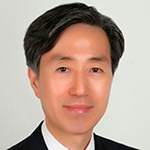 Tae-Yeon Seong received his degree in materials science from the University of Oxford in 1992. After two years as a postdoctoral fellow, he joined the Gwangju Institute of Science and Technology, where he served as department chair and director for the Brain Korea 21 Centre for Advanced Materials. In 2005, he moved to the Department of Materials Science and Engineering at Korea University, where he served as department chair and Director for Brain Korea 21 Centre for Advanced Device Materials (2011-2016). He also served as Associate Dean of Research, College of Engineering at Korea University (2014-2015).
Tae-Yeon Seong received his degree in materials science from the University of Oxford in 1992. After two years as a postdoctoral fellow, he joined the Gwangju Institute of Science and Technology, where he served as department chair and director for the Brain Korea 21 Centre for Advanced Materials. In 2005, he moved to the Department of Materials Science and Engineering at Korea University, where he served as department chair and Director for Brain Korea 21 Centre for Advanced Device Materials (2011-2016). He also served as Associate Dean of Research, College of Engineering at Korea University (2014-2015).
Seong was president of Korea Society of Optoelectronics in 2014. He was also advisory committee member of Ministry of Education of Korea (2005-2008). His current research philosophy is focused on innovations in developing efficient device processing technologies and transparent electrodes for replacing ITO that bring new functionality to optoelectronic devices, such as LEDs and OLEDs, and characterizing semiconductor and electronic materials. Seong has authored and co-authored about 420 papers and holds 230 patents issued or pending. He is currently a life member of ECS and served as editorial advisory committee member for the ECS Journal of Solid State Science and Technology and ECS Solid State Letters.
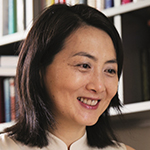 Yang Shao-Horn is currently the W.M. Keck Professor of Energy and Professor of Mechanical Engineering, at MIT’s Department of Materials Science and Engineering. Throughout her career, Shao-Horn has focused her research on the chemical physics of surfaces with emphasis on metal oxides, including oxide-solve interface in Li-batteries, descriptors of catalytic activity, wetting properties and ion transport, and design materials and devices for solar fuel including water splitting, carbon dioxide reduction, and metal-oxygen redox chemistry.
Yang Shao-Horn is currently the W.M. Keck Professor of Energy and Professor of Mechanical Engineering, at MIT’s Department of Materials Science and Engineering. Throughout her career, Shao-Horn has focused her research on the chemical physics of surfaces with emphasis on metal oxides, including oxide-solve interface in Li-batteries, descriptors of catalytic activity, wetting properties and ion transport, and design materials and devices for solar fuel including water splitting, carbon dioxide reduction, and metal-oxygen redox chemistry.
Shao-Horn’s research includes experimental components comprising synthesis of well-defined surfaces and nanostructured materials, and investigation of processes at the surfaces/interfaces using (electro) chemical methods coupled with ex situ and in situ X-ray-based and electron-based spectroscopy. Among her many honors, Shao-Horn has been awarded the ECS Charles Tobias Young Investigator Award, ISE’s Tajima Prize, Gail E. Kendall Professor of Mechanical Engineering, and AAAS Fellow. She has been ranked as a Highly Cited Researcher by Thomson Reuters, with just over 200 journal papers published. Shao-Horn has advised over 70 MS and PhD students.
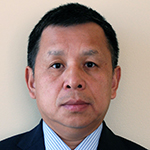 Nianqiang (Nick) Wu is currently a professor of materials science at West Virginia University. He received his PhD in materials science and engineering from Zhejiang University, China. He was a postdoctoral research fellow at the University of Pittsburgh from 1999 to 2001, and managed Keck Surface Science Center at Northwestern University from 2001-2005. He joined WVU as an assistant professor in 2005.
Nianqiang (Nick) Wu is currently a professor of materials science at West Virginia University. He received his PhD in materials science and engineering from Zhejiang University, China. He was a postdoctoral research fellow at the University of Pittsburgh from 1999 to 2001, and managed Keck Surface Science Center at Northwestern University from 2001-2005. He joined WVU as an assistant professor in 2005.
Wu is recognized for the fundamental understanding of charge transfer and energy transfer processes in sensors, photocatalysts, photoelectrochemical cells, and electrochemical devices. His work has advanced the science and technology of biosensors for detection of environmental pollutants and human biomarkers. He is widely recognized for his role in development of theory, materials, and devices for plasmonic solar energy conversion. He has authored or co-authored one book, three book chapters and about 160 refereed journal articles. Wu is actively involved in ECS, having served as treasurer, secretary, vice chair, and currently as chair of the ECS Sensor Division. He also serves on the advisory board of ECS’s member magazine, Interface.





